Resetting Your Windows Server 2012 Password: A Comprehensive Guide
- Home
- Support
- Tips System Rescue
- Resetting Your Windows Server 2012 Password: A Comprehensive Guide
Summary
Forgot your Windows Server 2012 password? Don't worry - we've got you covered. This article offers a comprehensive guide on how to reset your local and domain account passwords on Windows Server 2012, providing multiple efficient methods for a seamless recovery process.
Start by downloading Renee PassNow from the official website and install it on a different computer that you can access. You can choose the appropriate version based on your computer’s operating system.

Remove Windows Login Password 3 steps for whole password remove process.
Recover the files Recover the deleted files without Windows system.
Transfer the data Transfer the important files of the computer with system.
Fix Windows startup error Fix various Windows startup failures or crashes.
Erase disk Completely erase disk files which will not be restored.
Remove Windows Login Password 3 steps for whole password remove process.
Recover the files Recover the deleted files without Windows system.
Transfer the data Transfer the important files of the computer with system.
Launch Renee PassNow and insert a USB flash drive or blank CD/DVD into the computer. Select the option to create a bootable media. Follow the on-screen instructions to complete the process.
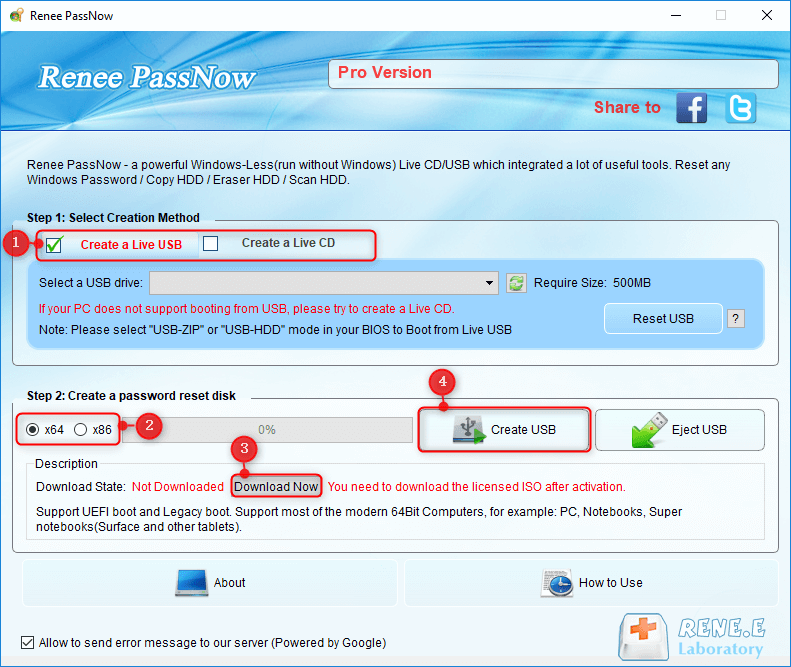
Insert the bootable USB or CD/DVD into the locked Windows computer. Restart the computer and enter the BIOS settings by pressing the appropriate key (usually F2 or Delete). Configure the boot order to prioritize the bootable media.
| Server Type | Enter boot menu method |
|---|---|
| DELL | Press the F12 key repeatedly before the Dell logo appears on the screen. |
| HP | Press the F9 key multiple times when the HP logo is displayed. |
| BIOS Name | Enter boot menu method |
|---|---|
| ASRock | DEL or F2 |
| ASUS | DEL or F2 for PCs/ DEL or F2 for Motherboards |
| Acer | DEL or F2 |
| Dell | F12 or F2 |
| ECS | DEL |
| Gigabyte / Aorus | DEL or F2 |
| Lenovo (Consumer Laptops) | F2 or Fn + F2 |
| Lenovo (Desktops) | F1 |
| Lenovo (ThinkPads) | Enter then F1 |
| MSI | DEL |
| Microsoft Surface Tablets | Press and hold Power and Volume Up buttons |
| Origin PC | F2 |
| Samsung | F2 |
| Toshiba | F2 |
| Zotac | DEL |
| HP | Esc/ F9 for `Boot Menu`/ Esc/ F10/ Storage tab/ Boot Order/ Legacy Boot Sources |
| INTEL | F10 |

After successfully booting from the bootable media, Renee PassNow will load. Select “PassNow!” function after booting from the new created Windows password reset disk.
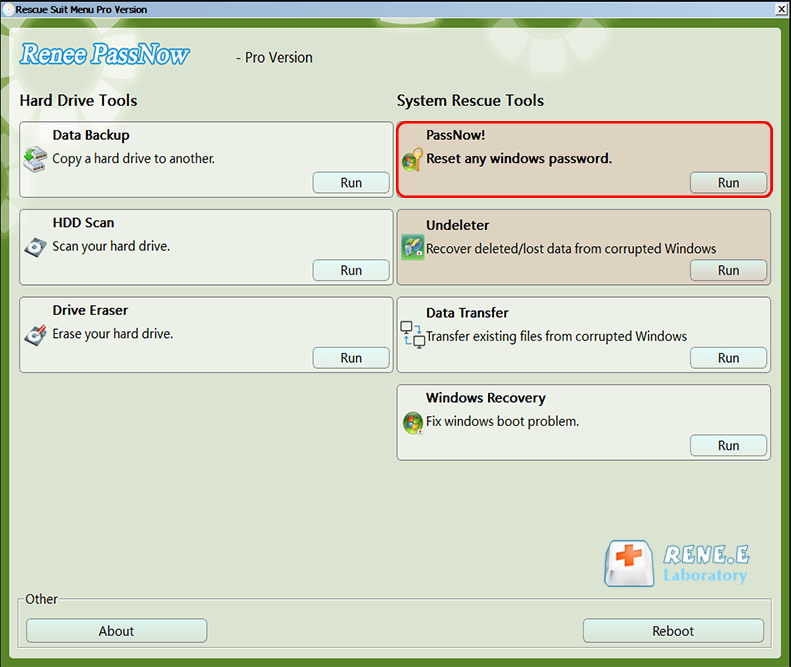
Choose the user account for which you want to reset the password. Then, click on the “Clear Password” button. Renee PassNow will remove or reset the password for the selected user account.
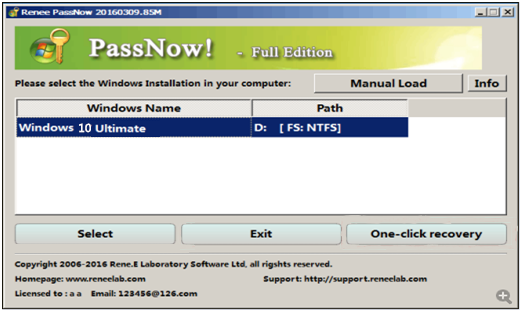
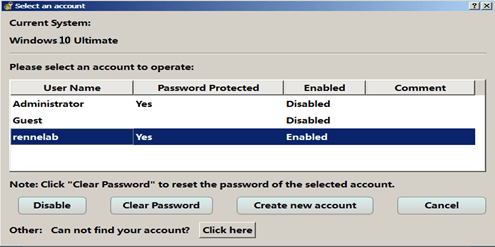
Once the password is reset, remove the bootable media from the PC and restart the computer. You will now be able to log in to Windows Account without a password.
Start by downloading Renee PassNow from the official website and install it on a different computer that you can access. You can choose the appropriate version based on your computer’s operating system.

Remove Windows Login Password 3 steps for whole password remove process.
Recover the files Recover the deleted files without Windows system.
Transfer the data Transfer the important files of the computer with system.
Fix Windows startup error Fix various Windows startup failures or crashes.
Erase disk Completely erase disk files which will not be restored.
Remove Windows Login Password 3 steps for whole password remove process.
Recover the files Recover the deleted files without Windows system.
Transfer the data Transfer the important files of the computer with system.
Launch Renee PassNow and insert a USB flash drive or blank CD/DVD into the computer. Select the option to create a bootable media. Follow the on-screen instructions to complete the process.

Insert the bootable USB or CD/DVD into the locked Windows computer. Restart the computer and enter the BIOS settings by pressing the appropriate key (usually F2 or Delete). Configure the boot order to prioritize the bootable media.
After successfully booting from the bootable media, Renee PassNow will load. Select “PassNow!” function after booting from the new created Windows password reset disk.

Choose the user account for which you want to reset the password. Then, click on the “Clear Password” button. Renee PassNow will remove or reset the password for the selected user account.


Import-Module ActiveDirectory
Set-ADAccountPassword -Identity jliebert -Reset -NewPassword (ConvertTo-SecureString -AsPlainText "newpassword" -Force) -Verbose
Import-Module ActiveDirectory
$userList = Get-Content "C:\Path\To\UserList.txt"
foreach ($user in $userList) {
$newPassword = [char[]](Get-Random -Count 5 -Minimum 33 -Maximum 126) -join ""
$securePassword = $newPassword | ConvertTo-SecureString -AsPlainText -Force
Set-ADAccountPassword -Identity $user -Reset -NewPassword $securePassword
Set-ADUser -Identity $user -ChangePasswordAtLogon $true
Write-Output "User: $user – New Password: $newPassword"
}
& "C:\PS\bulk_reset.ps1"
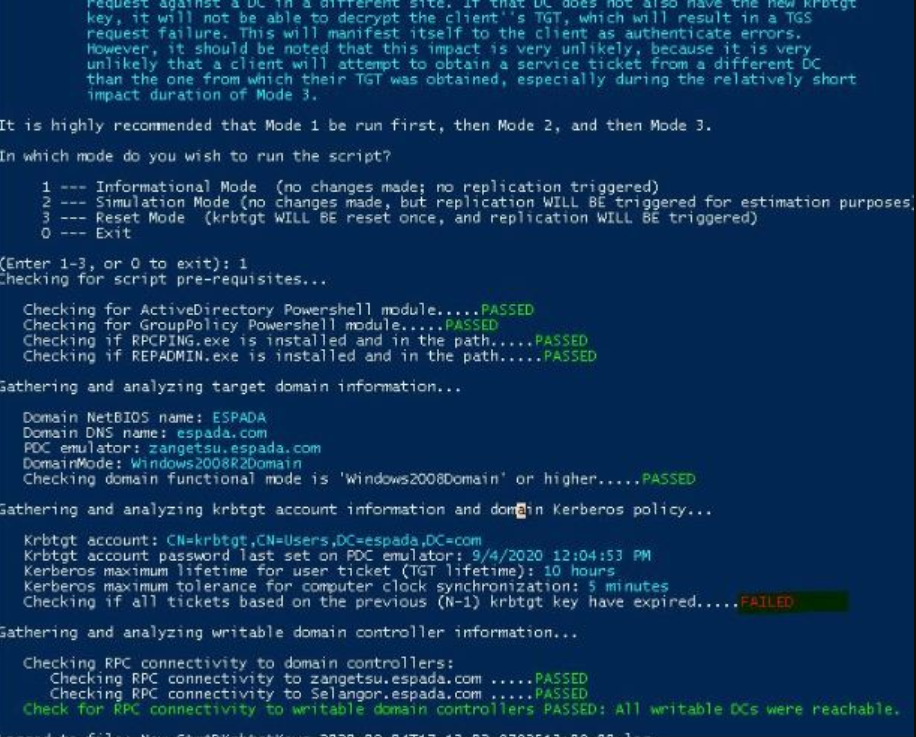
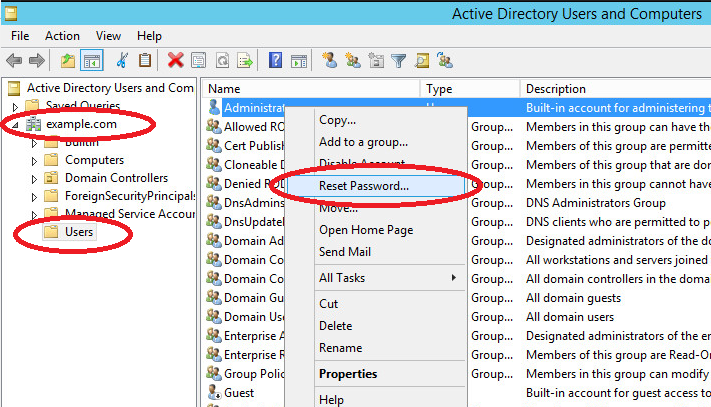
Relate Links :
Crack the Code: A Deeper Dive into Windows System Passwords and Reset Methods
20-08-2023
Ashley S. Miller : This article offers a comprehensive guide on Windows system passwords, covering different account types, password storage, best practices,...
Best Practices to Set Default Password on Windows Server 2012
06-09-2024
Ashley S. Miller : This article provides essential information about the default password for Windows Server 2012 Essentials and emphasizes the risks...
A Step-by-Step Guide for Mastering Bootsect on Windows
28-07-2023
Jennifer Thatcher : Learn about Bootsect.exe program including its definition, scope of use, and how to use it. Also, discover how...
How to Crack Windows 10 Activation
02-08-2021
Amanda J. Brook : Users must activate Windows 10 if they want to get all features. Apart from product key, Windows 10...




